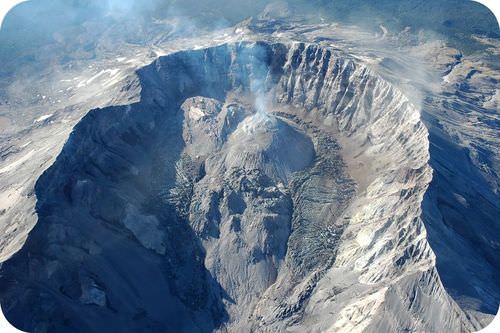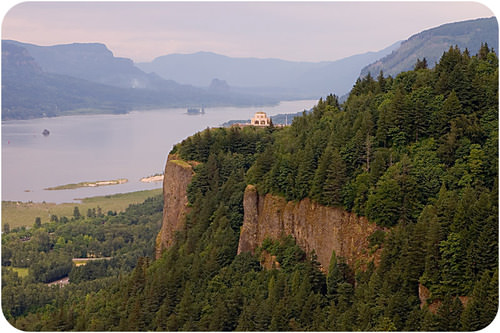7.11: Volcanic Landforms
- Page ID
- 5435
\( \newcommand{\vecs}[1]{\overset { \scriptstyle \rightharpoonup} {\mathbf{#1}} } \)
\( \newcommand{\vecd}[1]{\overset{-\!-\!\rightharpoonup}{\vphantom{a}\smash {#1}}} \)
\( \newcommand{\id}{\mathrm{id}}\) \( \newcommand{\Span}{\mathrm{span}}\)
( \newcommand{\kernel}{\mathrm{null}\,}\) \( \newcommand{\range}{\mathrm{range}\,}\)
\( \newcommand{\RealPart}{\mathrm{Re}}\) \( \newcommand{\ImaginaryPart}{\mathrm{Im}}\)
\( \newcommand{\Argument}{\mathrm{Arg}}\) \( \newcommand{\norm}[1]{\| #1 \|}\)
\( \newcommand{\inner}[2]{\langle #1, #2 \rangle}\)
\( \newcommand{\Span}{\mathrm{span}}\)
\( \newcommand{\id}{\mathrm{id}}\)
\( \newcommand{\Span}{\mathrm{span}}\)
\( \newcommand{\kernel}{\mathrm{null}\,}\)
\( \newcommand{\range}{\mathrm{range}\,}\)
\( \newcommand{\RealPart}{\mathrm{Re}}\)
\( \newcommand{\ImaginaryPart}{\mathrm{Im}}\)
\( \newcommand{\Argument}{\mathrm{Arg}}\)
\( \newcommand{\norm}[1]{\| #1 \|}\)
\( \newcommand{\inner}[2]{\langle #1, #2 \rangle}\)
\( \newcommand{\Span}{\mathrm{span}}\) \( \newcommand{\AA}{\unicode[.8,0]{x212B}}\)
\( \newcommand{\vectorA}[1]{\vec{#1}} % arrow\)
\( \newcommand{\vectorAt}[1]{\vec{\text{#1}}} % arrow\)
\( \newcommand{\vectorB}[1]{\overset { \scriptstyle \rightharpoonup} {\mathbf{#1}} } \)
\( \newcommand{\vectorC}[1]{\textbf{#1}} \)
\( \newcommand{\vectorD}[1]{\overrightarrow{#1}} \)
\( \newcommand{\vectorDt}[1]{\overrightarrow{\text{#1}}} \)
\( \newcommand{\vectE}[1]{\overset{-\!-\!\rightharpoonup}{\vphantom{a}\smash{\mathbf {#1}}}} \)
\( \newcommand{\vecs}[1]{\overset { \scriptstyle \rightharpoonup} {\mathbf{#1}} } \)
\( \newcommand{\vecd}[1]{\overset{-\!-\!\rightharpoonup}{\vphantom{a}\smash {#1}}} \)
\(\newcommand{\avec}{\mathbf a}\) \(\newcommand{\bvec}{\mathbf b}\) \(\newcommand{\cvec}{\mathbf c}\) \(\newcommand{\dvec}{\mathbf d}\) \(\newcommand{\dtil}{\widetilde{\mathbf d}}\) \(\newcommand{\evec}{\mathbf e}\) \(\newcommand{\fvec}{\mathbf f}\) \(\newcommand{\nvec}{\mathbf n}\) \(\newcommand{\pvec}{\mathbf p}\) \(\newcommand{\qvec}{\mathbf q}\) \(\newcommand{\svec}{\mathbf s}\) \(\newcommand{\tvec}{\mathbf t}\) \(\newcommand{\uvec}{\mathbf u}\) \(\newcommand{\vvec}{\mathbf v}\) \(\newcommand{\wvec}{\mathbf w}\) \(\newcommand{\xvec}{\mathbf x}\) \(\newcommand{\yvec}{\mathbf y}\) \(\newcommand{\zvec}{\mathbf z}\) \(\newcommand{\rvec}{\mathbf r}\) \(\newcommand{\mvec}{\mathbf m}\) \(\newcommand{\zerovec}{\mathbf 0}\) \(\newcommand{\onevec}{\mathbf 1}\) \(\newcommand{\real}{\mathbb R}\) \(\newcommand{\twovec}[2]{\left[\begin{array}{r}#1 \\ #2 \end{array}\right]}\) \(\newcommand{\ctwovec}[2]{\left[\begin{array}{c}#1 \\ #2 \end{array}\right]}\) \(\newcommand{\threevec}[3]{\left[\begin{array}{r}#1 \\ #2 \\ #3 \end{array}\right]}\) \(\newcommand{\cthreevec}[3]{\left[\begin{array}{c}#1 \\ #2 \\ #3 \end{array}\right]}\) \(\newcommand{\fourvec}[4]{\left[\begin{array}{r}#1 \\ #2 \\ #3 \\ #4 \end{array}\right]}\) \(\newcommand{\cfourvec}[4]{\left[\begin{array}{c}#1 \\ #2 \\ #3 \\ #4 \end{array}\right]}\) \(\newcommand{\fivevec}[5]{\left[\begin{array}{r}#1 \\ #2 \\ #3 \\ #4 \\ #5 \\ \end{array}\right]}\) \(\newcommand{\cfivevec}[5]{\left[\begin{array}{c}#1 \\ #2 \\ #3 \\ #4 \\ #5 \\ \end{array}\right]}\) \(\newcommand{\mattwo}[4]{\left[\begin{array}{rr}#1 \amp #2 \\ #3 \amp #4 \\ \end{array}\right]}\) \(\newcommand{\laspan}[1]{\text{Span}\{#1\}}\) \(\newcommand{\bcal}{\cal B}\) \(\newcommand{\ccal}{\cal C}\) \(\newcommand{\scal}{\cal S}\) \(\newcommand{\wcal}{\cal W}\) \(\newcommand{\ecal}{\cal E}\) \(\newcommand{\coords}[2]{\left\{#1\right\}_{#2}}\) \(\newcommand{\gray}[1]{\color{gray}{#1}}\) \(\newcommand{\lgray}[1]{\color{lightgray}{#1}}\) \(\newcommand{\rank}{\operatorname{rank}}\) \(\newcommand{\row}{\text{Row}}\) \(\newcommand{\col}{\text{Col}}\) \(\renewcommand{\row}{\text{Row}}\) \(\newcommand{\nul}{\text{Nul}}\) \(\newcommand{\var}{\text{Var}}\) \(\newcommand{\corr}{\text{corr}}\) \(\newcommand{\len}[1]{\left|#1\right|}\) \(\newcommand{\bbar}{\overline{\bvec}}\) \(\newcommand{\bhat}{\widehat{\bvec}}\) \(\newcommand{\bperp}{\bvec^\perp}\) \(\newcommand{\xhat}{\widehat{\xvec}}\) \(\newcommand{\vhat}{\widehat{\vvec}}\) \(\newcommand{\uhat}{\widehat{\uvec}}\) \(\newcommand{\what}{\widehat{\wvec}}\) \(\newcommand{\Sighat}{\widehat{\Sigma}}\) \(\newcommand{\lt}{<}\) \(\newcommand{\gt}{>}\) \(\newcommand{\amp}{&}\) \(\definecolor{fillinmathshade}{gray}{0.9}\)Why does this massive rock stick out like this?
Shiprock in New Mexico is visible for many miles around. Shiprock is the neck of an old volcano. The magma cooled into a rock that was harder than the surrounding volcano. So the volcano eroded away and left the neck. The peak is on the land of the Navajo Nation, for whom it has great religious significance.
Landforms from Lava
Extrusive igneous rocks cool at the surface. Volcanoes are one type of feature that forms from extrusive rocks. Several other interesting landforms are also extrusive features. Intrusive igneous rocks cool below the surface. These rocks do not always remain hidden. Rocks that formed in the crust are exposed when the rock and sediment that covers them erode away.
Volcanoes and Vents
The most obvious landforms created by lava are volcanoes. These are mostly cinder cones, composite volcanoes, and shield volcanoes. Eruptions also take place through other types of vents, commonly from fissures (Figure below). The eruptions that created the entire ocean floor are essentially fissure eruptions.
A fissure eruption on Mauna Loa in Hawaii travels toward Mauna Kea on the Big Island.
Lava Domes
When lava is thick, it flows slowly. If thick lava makes it to the surface, it cannot flow far from the vent. It often stays right in the middle of a crater at the top of a volcano. Here the lava creates a large, round lava dome (Figure below). Lava flows often make mounds right in the middle of craters at the top of volcanoes (Figure below).
Lava domes may form in the crater of composite volcanoes, as at Mount St. Helens.
Lava Plateaus
A lava plateau is made of a large amount of fluid lava. The lava flows over a large area and cools. This creates a large, flat surface of igneous rock. Lava plateaus may be huge. The Columbia Plateau covers over 161,000 square kilometers (63,000 square miles). It makes up parts of the states of Washington, Oregon, and Idaho (Figure below).
Layer upon layer of basalt have created the Columbia Plateau, which covers more than 161,000 square kilometers (63,000 square miles) in Washington, Oregon, and Idaho.
Land
New land is created in volcanic eruptions. The Hawaiian Islands are shield volcanoes. These volcanoes formed from fluid lava (Figure below). The island grows as lava is added on the coast. New land may also emerge from lava that erupts from beneath the water. This is one way that new land is created.
Lava erupts into the Pacific Ocean in Hawaii, creating new land.
Landforms from Magma
Magma that cools underground forms intrusions (Figure below). Usually this magma is very viscous, felsic magma. This magma does not rise easily and so cools slowly underground. Intrusions become land formations if they are exposed at the surface by uplift and erosion.
The granite intrusions that form the Sierra Nevada in California are well exposed.
Summary
- Landforms created by lava include volcanoes, domes, and plateaus.
- New land can be created by volcanic eruptions.
- Landforms created by magma include volcanic necks and domes.
Review
- Why is it important that volcanic eruptions can form new land?
- How do lava plateaus form?
- Describe the granite exposed in the photo of the Sierra Nevada. What is its history?
Explore More
Use the resource below to answer the questions that follow.
- What type of lava is produced by volcanoes? What does it look like when cooled?
- How did the columns in the video form?
- How was Fingal's cave formed?
- Describe a basalt lava that doesn't contain much gas flows.
- How does basalt behave when it has a lot of gas trapped within it?
- How does the violence of the eruption of the flow with the gas compare to an eruption of a felsic volcano like Mt. St. Helens or Mt. Pinatubo?







